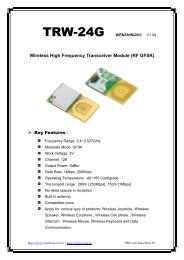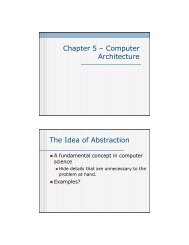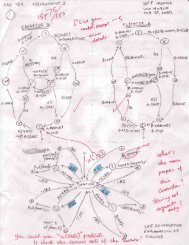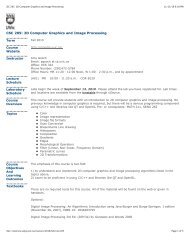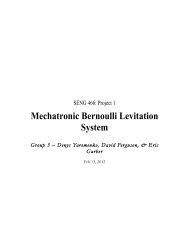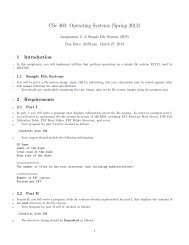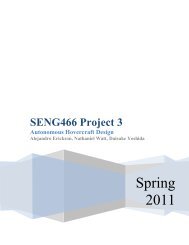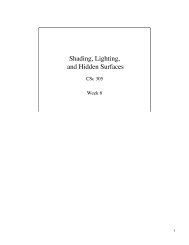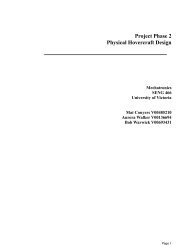Icon - Department of Computer Science - University of Victoria
Icon - Department of Computer Science - University of Victoria
Icon - Department of Computer Science - University of Victoria
Create successful ePaper yourself
Turn your PDF publications into a flip-book with our unique Google optimized e-Paper software.
Chapter 2<br />
Introduction to Implicit Surfaces<br />
Implicit surfaces are defined with scalar functions. A point p ∈ R 3 is assigned a value<br />
called a field value f(p) ∈ R by applying a continuous scalar function f : R 3 → R.<br />
The points which store the value called the iso-value form a surface called an iso-<br />
surface. An iso-surface can be defined as follows:<br />
S = {p ∈ R 3 : f(p) = viso} (2.1)<br />
where S is the iso-surface and viso is the iso-value. If an iso-surface is closed, this<br />
scalar function can also define an implicit volume by simply changing the equality<br />
into the inequality as follows:<br />
V = {p ∈ R 3 : f(p) ≥ viso} (2.2)<br />
This equation divides 3D space into inside and outside using the iso-surface as the<br />
border. For example, a point p where f(p) ≥ viso is inside a volume V .<br />
In practice, an iso-surface is visualized on a screen and recognized as a 3D model,<br />
however the strength <strong>of</strong> implicit surfaces is that an underlying model is a volume<br />
model and has several advantages <strong>of</strong> 3D modeling. Fundamental issues <strong>of</strong> implicit<br />
surfaces are then how to define a continuous scalar function f (Section 2.1 Modeling)<br />
and how to visualize the scalar field (Section 2.2 Rendering).<br />
6




